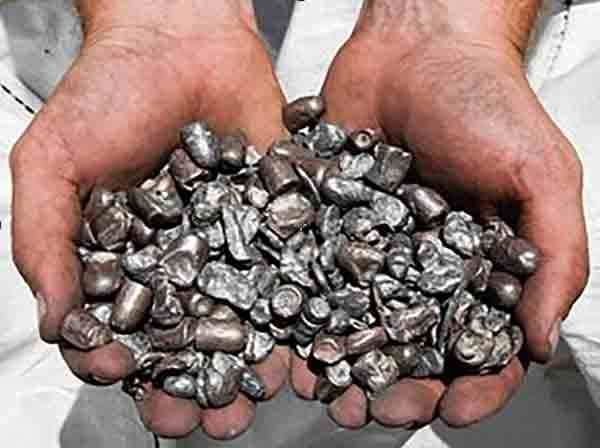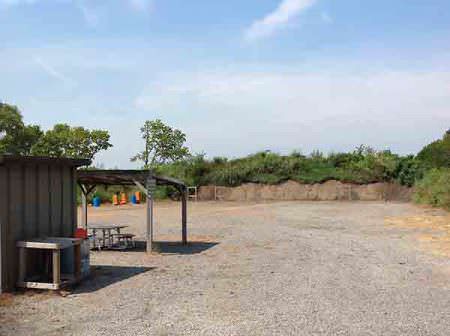

HURON, S.D. –-(Ammoland.com)- Dakota Tschetter and his brother, Lance, didn’t have the idea of shooting range reclamation in their strategic plan, but when the opportunity was presented, as young entrepreneurs, the Tschetters accepted the challenge.
It was after a day at the shooting range in the fall of 2014 that Colin Treeby took notice of how cluttered and unkempt the shooting range looked after multiple fired rounds. There were remnants of shells, clay pigeons and other scraps of material strewn about that range. Treeby knew there had to be a way to quickly and easily clean up the range.
That’s when he connected with the Tschetters. Known for their ingenuity, the Tschetters began to build a prototype lead cleaning machine with input from Treeby. The machine rolled out of the shop, in Huron, SD, a few months later, and Range Recovery Technologies (RRT) was in business.
“The machine wasn’t anything fancy,” Lance said. “But it got the job done and cleaned up the range nicely.”
The before and after photos reveal a glaring difference once the RRT machine passed through.

So why are clean ranges so important? In short, it has a lot to do with human exposure to lead.
The Tschetter brothers say the Environmental Protection Agency (EPA) developed a ‘Best Management Practices’ for shooting ranges to follow so that ranges are operated under environmentally conscious conditions. (These practices can be found on RRT’s website.) According to studies conducted by the EPA, human exposure to lead historically comes from three different sources: lead-based paint, consumption (drinking water) and lead in dust and soil.
As lead is introduced into the environment, over time it oxidizes. Various factors cause this oxidization, and eventually the lead is absorbed into the soil and groundwater.
That’s where RRT’s machine comes into play.

“Our machine collects, sorts and cleans lead remnants of a substantial size, meaning remains at least a half inch to one inch from a .22 caliber or larger, for example. The remains are big enough to see by the naked eye, but small enough that it’d be too difficult to clean by hand,” Lance said.
“We want to be clear that this is not lead-remediation. This process is lead-reclamation and our system is meant to be used for more preventative maintenance,” Dakota said. “It’s a cost-effective technique to clean up and maintain safe shooting ranges.”
While the RRT machine cannot clean up the tiny pieces of lead, collecting the larger pieces is a big step. Studies show that prolonged lead exposure begins to affect the human brain and nervous system, the reproductive system, and if not detected early on, children can develop behavioral and learning problems, hearing problems, impaired motor skills, and delayed growth milestones.
“We can’t clean the lead that’s already in the ground, but we can prevent more lead remains from entering it permanently,” Lance said. “Our goal is to gain the attention of shooting ranges, and eventually move in to other arenas as well.”
After almost a full year of business, RRT has indeed gained the attention of police departments and military ranges from across the nation.
“There are a lot of hoops to jump through when it comes to military outfits, but we want people to know we’re out here, and if your range is in rough shape, we can help you clean it up. Our machine can clean 10-30 yards per hour,” Lance added. “So depending on the size of the range, we can have it cleaned in a day’s time.”
And at the end of the day, what happens to all the cleaned lead?
“After the lead is recovered, the machine sorts and cleans it, and what’s left behind is ultimately prepped for a recycling center, where it will be melted down and recycled into new production,” Dakota said. “The whole process is very environment-friendly.”
In January, RRT will travel to Las Vegas, Nev., to exhibit at the 10th annual SHOT (Shooting, Hunting, and Outdoor Trade) Show Industry Day at the Range, a prelude to the SHOT Show that South Dakota will once again have a presence. According to the SHOT Show, last year’s exhibit attracted more than 1,600 media and buyers, with more than 170 exhibiting manufacturers.
For more information about the SHOT Show Industry Day at the Range, please visit www.shotshowrangeday.com. To learn more about Range Recovery Technologies, go to www.rangerecoverytechnologies.com.
For high-resolution photos, please visit the Governor’s Office of Economic Development’s Facebook page, at www.facebook.com/sdgoed.
